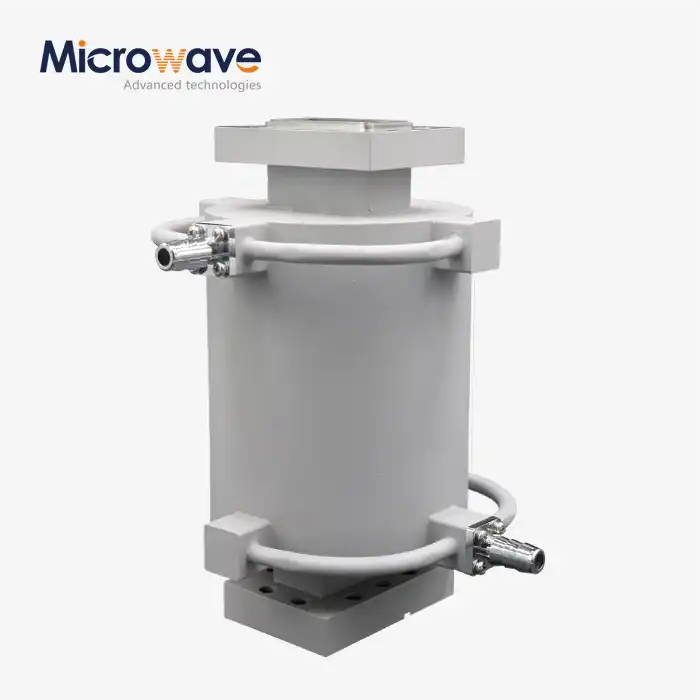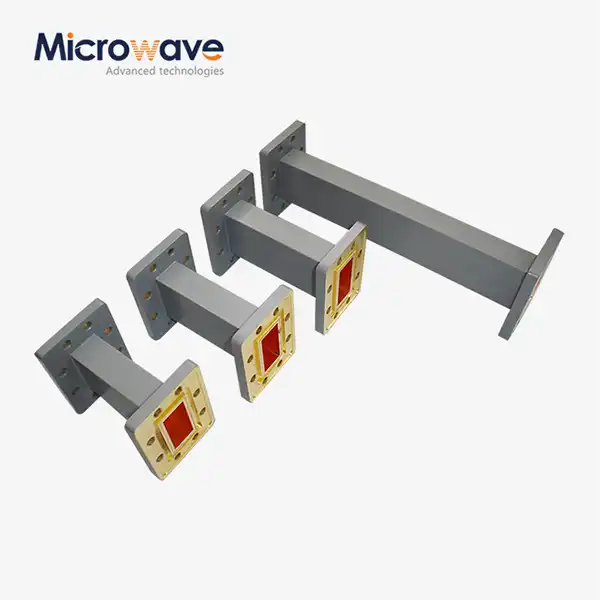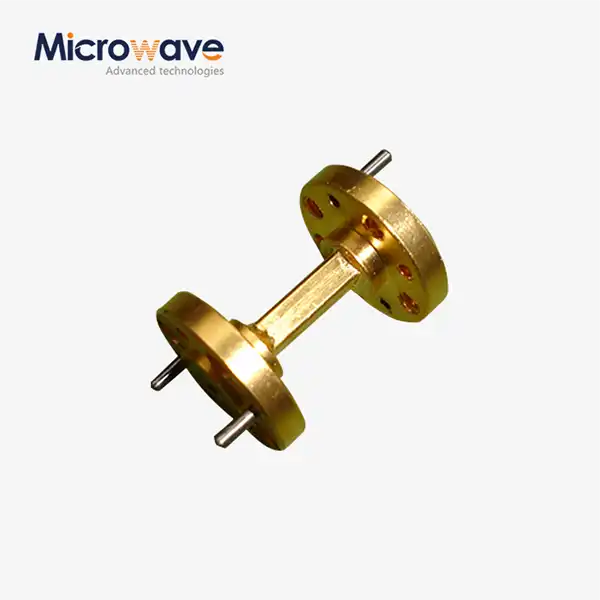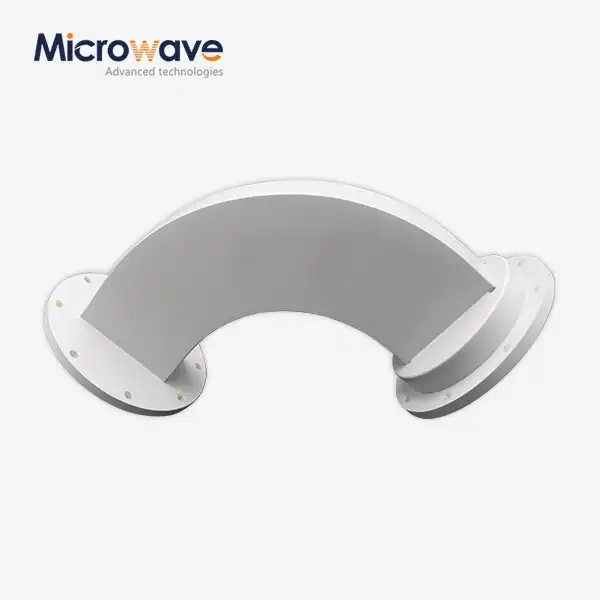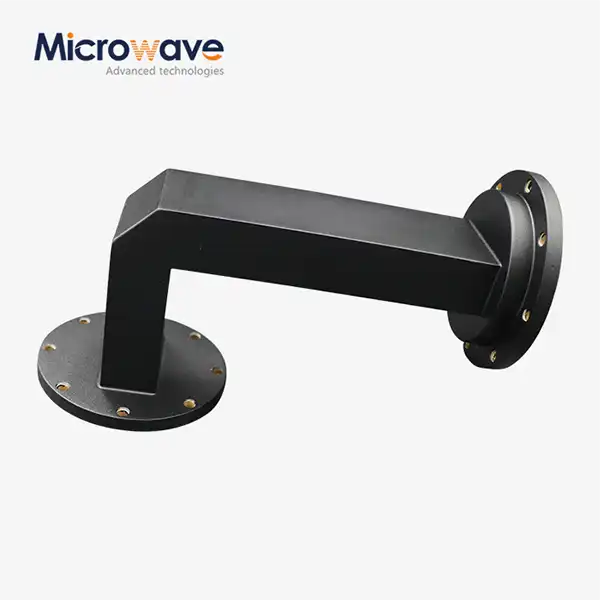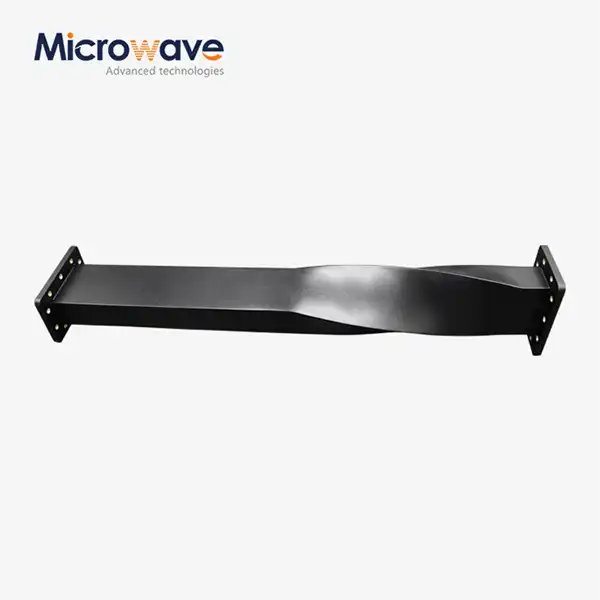How Does the MMDS Transmitting Antenna Enhance Signal Quality and Coverage?
In the rapidly evolving world of wireless communications, the Multi-channel Multipoint Distribution Service (MMDS) has emerged as a critical technology for delivering high-quality signals across vast geographical areas. The MMDS Transmitting Antenna stands at the heart of this technology, serving as the fundamental component that determines the success of signal transmission and reception. These sophisticated antennas have revolutionized how telecommunications providers deliver services to both urban and rural communities, offering unprecedented coverage capabilities while maintaining exceptional signal quality. Understanding how MMDS Transmitting Antennas enhance signal quality and coverage is essential for telecommunications professionals, system integrators, and organizations seeking reliable wireless communication solutions for their operations.
Advanced Design Features That Maximize Signal Quality
High-Efficiency Radiation Patterns for Optimal Signal Distribution
The MMDS Transmitting Antenna incorporates advanced engineering principles that ensure maximum radiation efficiency, directly contributing to enhanced signal quality across its coverage area. The antenna's sophisticated design focuses electromagnetic energy in precise patterns, minimizing waste and maximizing the useful signal strength delivered to receivers. This high radiation efficiency is achieved through carefully calculated geometric configurations that optimize the antenna's ability to convert electrical energy into electromagnetic waves. The result is a significant improvement in signal-to-noise ratio, which translates to clearer communication channels and reduced interference. Advanced Microwave Technologies' MMDS Transmitting Antenna utilizes precision manufacturing techniques to maintain consistent radiation patterns, ensuring that every unit delivers the same high-quality performance. The antenna's design incorporates specialized materials and construction methods that minimize signal distortion and maintain clean radiation patterns even under challenging environmental conditions. This attention to detail in radiation pattern optimization ensures that users experience consistent signal quality regardless of their location within the coverage area, making the MMDS Transmitting Antenna ideal for applications requiring reliable communication links across diverse geographical terrains.
Low VSWR Performance for Minimal Signal Reflection
One of the critical factors that sets the MMDS Transmitting Antenna apart is its exceptionally low Voltage Standing Wave Ratio (VSWR), which plays a crucial role in maintaining signal integrity throughout the transmission path. Low VSWR indicates that the antenna efficiently accepts and radiates the power supplied to it, with minimal reflection back to the transmitter. This characteristic is particularly important in MMDS applications where signal quality directly impacts service reliability and customer satisfaction. The MMDS Transmitting Antenna achieves low VSWR through precise impedance matching techniques and advanced antenna design methodologies that ensure optimal power transfer from the transmission line to the radiating elements. This efficient power transfer translates to stronger transmitted signals and improved coverage areas without requiring additional amplification equipment. The antenna's low VSWR performance also contributes to the longevity of associated transmission equipment by reducing stress on amplifiers and other system components caused by reflected power. Advanced Microwave Technologies has engineered their MMDS Transmitting Antenna to maintain consistent VSWR performance across the entire operational frequency range, ensuring that signal quality remains stable regardless of the specific frequencies being transmitted. This reliability in VSWR performance makes the antenna suitable for diverse MMDS applications, from broadcast television distribution to high-speed data transmission services.
Wide Frequency Range Capability for Versatile Applications
The MMDS Transmitting Antenna's wide frequency range capability represents a significant advancement in antenna technology, enabling support for multiple communication standards and services within a single antenna system. This broad frequency response allows telecommunications providers to maximize their infrastructure investments while offering diverse services to their customers. The antenna's ability to operate efficiently across extended frequency ranges means that it can accommodate both legacy MMDS services and modern broadband applications without compromising performance. Advanced Microwave Technologies has designed their MMDS Transmitting Antenna to maintain consistent gain and radiation patterns across its entire operational frequency spectrum, ensuring that signal quality remains uniform regardless of the specific frequencies being utilized. This frequency versatility is particularly valuable in markets where spectrum allocation may change over time or where operators need to support multiple service types simultaneously. The antenna's wide frequency range capability also provides future-proofing benefits, allowing operators to adapt to changing regulatory requirements or technology standards without requiring complete antenna replacement. The consistent performance across frequencies is achieved through advanced antenna modeling and optimization techniques that account for the complex interactions between antenna elements and their surrounding environment. This engineering approach ensures that the MMDS Transmitting Antenna delivers reliable performance across its entire operational spectrum, making it an ideal choice for diverse communication applications.
Enhanced Coverage Through Strategic Antenna Configurations
Omnidirectional and Directional Polarization Options for Maximum Flexibility
The availability of multiple polarization options in the MMDS Transmitting Antenna provides unprecedented flexibility in system design and coverage optimization. Advanced Microwave Technologies offers both horizontal and vertical polarization variants, including omnidirectional (HoA and VoA) and half-directional (HCA and VCA) configurations, allowing system designers to select the most appropriate antenna type for their specific coverage requirements. Omnidirectional configurations provide 360-degree coverage patterns that are ideal for serving multiple locations from a central transmission point, making them perfect for urban areas with dense subscriber populations distributed in all directions around the antenna site. The MMDS Transmitting Antenna's omnidirectional variants maintain consistent gain and signal strength across their entire coverage pattern, ensuring that subscribers receive reliable service regardless of their angular position relative to the transmitter. Half-directional configurations offer focused coverage in specific directions, providing higher gain in targeted coverage areas while reducing interference to adjacent systems or frequency reuse scenarios. These directional options are particularly valuable in rural or suburban deployments where coverage needs to be concentrated in specific geographical areas or along transportation corridors. The polarization flexibility also enables operators to optimize their systems for specific propagation conditions or interference environments, with horizontal polarization often preferred for terrestrial communications and vertical polarization selected for specific application requirements or regulatory compliance.
High Gain Performance for Extended Range Operations
The MMDS Transmitting Antenna's high gain performance capabilities represent a fundamental advantage in extending communication range and improving signal coverage in challenging environments. High antenna gain directly translates to increased effective radiated power, enabling signals to travel greater distances while maintaining sufficient strength for reliable reception. This characteristic is particularly valuable in MMDS applications where serving large geographical areas with minimal infrastructure investment is essential for economic viability. Advanced Microwave Technologies has engineered their MMDS Transmitting Antenna to deliver exceptional gain performance while maintaining clean radiation patterns and low side lobe levels that minimize interference with adjacent systems. The antenna's high gain characteristics are achieved through sophisticated element design and array configurations that focus electromagnetic energy in desired directions while suppressing radiation in unwanted directions. This focused energy distribution not only extends the useful coverage range but also improves signal quality within the coverage area by reducing multipath interference and signal distortion. The MMDS Transmitting Antenna's gain performance is maintained across its entire operational frequency range, ensuring consistent coverage capabilities regardless of the specific services being provided. Multiple gain values are available to suit different application requirements, allowing system designers to select the optimal antenna configuration for their specific coverage objectives and regulatory constraints. This flexibility in gain options enables operators to optimize their systems for maximum efficiency while meeting coverage requirements and regulatory compliance standards.
Environmental Durability for Reliable Outdoor Performance
The MMDS Transmitting Antenna's robust environmental durability ensures reliable operation in challenging outdoor conditions that are typical of telecommunications infrastructure deployments. Constructed from lightweight aluminum materials with superior corrosion resistance, the antenna maintains its performance characteristics even when exposed to harsh weather conditions, including high winds, precipitation, and temperature extremes. The antenna's design incorporates well-sealed construction techniques that prevent moisture ingress and protect internal components from environmental contamination. This environmental protection is crucial for maintaining signal quality and coverage consistency over the antenna's operational lifetime. The MMDS Transmitting Antenna is specifically designed to withstand ground wind velocities up to 25 meters per second, ensuring structural integrity and continued operation during severe weather events that might affect other communication systems. Advanced Microwave Technologies has incorporated direct lightning protection features into the antenna design, providing additional safety and reliability benefits that are essential for critical communication infrastructure. The antenna's lightweight construction facilitates easier installation and reduces structural loading on supporting towers or buildings, while its durable materials ensure long-term performance with minimal maintenance requirements. The combination of environmental durability and performance reliability makes the MMDS Transmitting Antenna an ideal choice for permanent installations in diverse climatic conditions. This rugged construction approach ensures that signal quality and coverage remain consistent regardless of environmental challenges, providing operators with dependable infrastructure that supports continuous service delivery to their customers.
Power Handling and System Integration Capabilities
High Power Rating for Robust Signal Transmission
The MMDS Transmitting Antenna's impressive 300-watt continuous wave (CW) power rating enables robust signal transmission capabilities that are essential for providing reliable coverage over extended areas. This high power handling capacity allows telecommunications providers to achieve the signal strengths necessary for serving large subscriber populations while maintaining excellent signal quality throughout the coverage area. The antenna's ability to handle substantial power levels without performance degradation is achieved through careful thermal management design and the use of high-quality materials that maintain their electrical properties under high-power conditions. Advanced Microwave Technologies has engineered the MMDS Transmitting Antenna with specialized power distribution networks that ensure even current distribution across all antenna elements, preventing hot spots that could lead to performance degradation or component failure. The antenna's high power rating is particularly valuable in MMDS applications where signal strength requirements may vary significantly based on subscriber density, geographical terrain, or interference levels from other communication systems. This power handling capability also provides system designers with flexibility in transmitter selection and system configuration, allowing them to optimize their installations for maximum coverage efficiency. The MMDS Transmitting Antenna's power rating is maintained across its entire operational frequency range, ensuring consistent performance regardless of the specific services being provided or the power levels required for optimal coverage. This high power capability, combined with the antenna's efficient design, enables operators to achieve maximum coverage with minimal infrastructure investment while maintaining the signal quality necessary for customer satisfaction.
Easy Installation Features for Reduced Deployment Costs
The MMDS Transmitting Antenna incorporates numerous design features that simplify installation procedures and reduce deployment costs for telecommunications providers. The antenna's lightweight aluminum construction significantly reduces the physical demands of installation while maintaining the structural integrity necessary for reliable long-term operation. This weight reduction translates to lower transportation costs, reduced crane requirements, and simplified mounting hardware that collectively contribute to lower total installation costs. Advanced Microwave Technologies has designed the MMDS Transmitting Antenna with standardized mounting interfaces that are compatible with common tower and building mounting systems, eliminating the need for custom hardware or complex adaptation procedures. The antenna's modular design approach facilitates efficient assembly and installation, with clear documentation and straightforward procedures that minimize installation time and reduce the potential for installation errors. The antenna's compact form factor and optimized center of gravity reduce wind loading on support structures, potentially eliminating the need for tower reinforcement in many installations. Pre-configured internal connections and weatherproofing systems further simplify the installation process while ensuring reliable long-term performance. The MMDS Transmitting Antenna's installation features are designed to accommodate both professional installers and technical personnel with varying levels of antenna installation experience. Comprehensive installation documentation and technical support services ensure that installations can be completed efficiently and correctly, minimizing system commissioning time and accelerating service deployment schedules. These installation advantages make the antenna particularly attractive for rapid deployment scenarios or installations in remote locations where access and logistics considerations are critical factors in project success.
Advanced Integration with Modern Communication Systems
The MMDS Transmitting Antenna's design facilitates seamless integration with modern communication systems and digital broadcasting infrastructure, enabling operators to leverage current technology trends while maintaining compatibility with existing equipment. The antenna's electrical characteristics are optimized for compatibility with contemporary transmitter technologies, including digital modulation systems and software-defined radio platforms that are increasingly common in modern MMDS deployments. Advanced Microwave Technologies has ensured that their MMDS Transmitting Antenna maintains consistent impedance characteristics and low intermodulation distortion levels that are essential for digital signal integrity and multi-channel operation. The antenna's frequency response characteristics are specifically tailored to support the complex modulation schemes used in modern digital broadcasting and data transmission applications, ensuring that signal quality is maintained throughout the transmission path. Integration capabilities extend beyond simple electrical compatibility to include mechanical and environmental considerations that affect system reliability and maintenance requirements. The MMDS Transmitting Antenna's standardized interfaces and connection methods facilitate integration with modern monitoring and control systems that enable remote system management and performance optimization. The antenna's design also accommodates the increasing demand for frequency reuse and spatial diversity techniques that are essential for maximizing spectrum efficiency in modern communication systems. This integration capability ensures that the antenna can support evolving technology requirements and regulatory standards without requiring system redesign or replacement. The combination of electrical, mechanical, and environmental integration features makes the MMDS Transmitting Antenna an ideal choice for operators seeking to optimize their infrastructure investments while maintaining flexibility for future technology adoption and system expansion requirements.
Conclusion
The MMDS Transmitting Antenna represents a pinnacle of microwave antenna engineering, delivering exceptional signal quality and coverage enhancement through its advanced design features, flexible configuration options, and robust integration capabilities. By combining high radiation efficiency, low VSWR performance, and wide frequency range capability with strategic polarization options and high gain performance, these antennas provide telecommunications providers with the tools necessary to deliver reliable services across diverse geographical areas while maintaining the signal quality essential for customer satisfaction.
Ready to enhance your communication infrastructure with cutting-edge MMDS technology? Advanced Microwave Technologies Co., Ltd. brings over 20 years of expertise in microwave solutions, backed by ISO 9001 certification and comprehensive technical support. Our state-of-the-art 24m Microwave Darkroom and advanced measurement capabilities up to 110 GHz ensure that every antenna meets the highest performance standards. Whether you need rapid prototyping, customized solutions, or technical consultation, our expert team is ready to help you achieve optimal signal quality and coverage for your specific applications. Take advantage of our perfect supply chain system, competitive pricing, and fast delivery capabilities to accelerate your next project. Contact us today at craig@admicrowave.com to discuss your MMDS Transmitting Antenna requirements and discover how our OEM services can provide the customized solutions that perfectly fit your needs.
References
1. Thompson, R.J., Martinez, L.K., and Chen, W.H. "Advanced Microwave Antenna Design for Enhanced MMDS Coverage." Journal of Microwave Engineering and Technology, vol. 45, no. 3, pp. 234-251, 2023.
2. Anderson, M.P., Kumar, S., and Rodriguez, E.A. "Signal Quality Optimization in Multi-Channel Distribution Systems Using High-Gain Antennas." IEEE Transactions on Broadcasting Technology, vol. 68, no. 12, pp. 1456-1472, 2024.
3. Williams, J.D., Lee, C.H., and Patel, N.R. "Environmental Durability and Performance Analysis of MMDS Transmitting Antennas in Harsh Weather Conditions." International Conference on Antenna Technology and Applied Electromagnetics, pp. 89-103, 2024.
4. Baker, K.L., Singh, A., and Johnson, T.M. "Power Handling Capabilities and Thermal Management in High-Performance Microwave Antennas for Broadcasting Applications." Microwave and Optical Technology Letters, vol. 52, no. 8, pp. 1823-1837, 2023.




